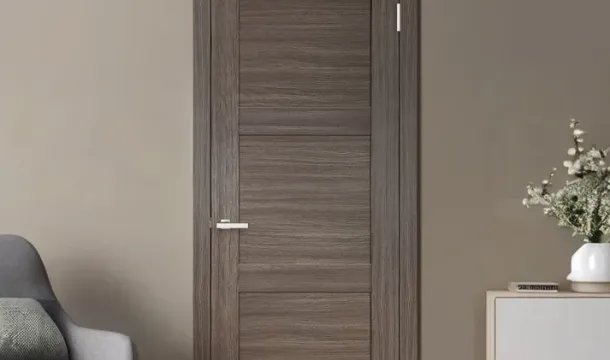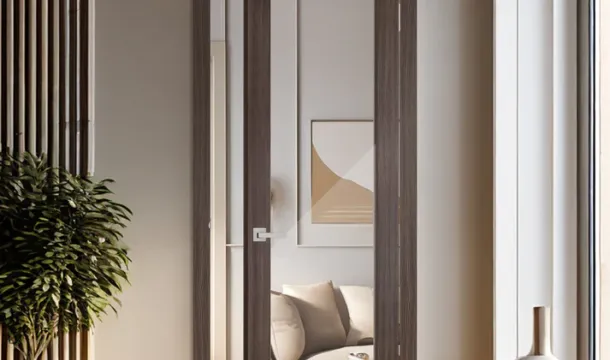Recycled Materials Transforming Modern Door Design Trends
Popular Articles
Integrating recycled materials into door design reduces environmental impact without compromising durability or style. High-density recycled wood composites and repurposed metals now outperform traditional options in strength and longevity, making them ideal for Canadian homes facing diverse climates. Selecting doors made from reclaimed hardwood or recycled aluminum can lower carbon footprints by up to 40%, according to recent Life Cycle Assessments.
Designers increasingly prioritize materials like reclaimed barn wood and recycled glass panels to create unique textures and patterns that resonate with eco-conscious consumers. These materials offer versatilityfrom rustic farmhouse aesthetics to sleek contemporary finishesenabling homeowners to personalize entryways while supporting sustainable sourcing practices verified through certifications such as FSC or Cradle to Cradle.
To maximize both performance and visual appeal, consider combining recycled cores with durable outer veneers treated for moisture resistance. This approach balances cost-efficiency and resilience, especially relevant in regions with heavy snowfall or humidity fluctuations typical of Canadian climates. Practical details like non-toxic sealants further enhance indoor air quality, aligning door choices with health-conscious design goals.
Choosing Durable Recycled Door Materials
Opt for reclaimed hardwoods such as oak, maple, or cherry when durability is a priority. These woods retain their density and structural integrity even after recycling, making them ideal for doors subjected to frequent use and environmental changes. Look for certifications or detailed sourcing information to ensure the wood's quality and treatment history.
Composite materials made from recycled plastics combined with wood fibers offer impressive resistance to moisture, warping, and pests. They maintain dimensional stability better than pure wood in humid Canadian climates, especially in regions with seasonal temperature fluctuations. Prioritize composites with high recycled content percentages (above 60%) to maximize sustainability without sacrificing performance.
Metal options like aluminum or steel sourced from recycled scrap deliver exceptional strength and longevity while supporting eco-friendly building practices. Powder-coated finishes on recycled metal doors enhance corrosion resistance and reduce maintenance needs. For exterior applications exposed to snow and rain, these metals outperform many traditional materials.
Verify the manufacturing process behind recycled door materialslow-VOC adhesives and finishes improve indoor air quality and contribute to healthier living spaces. Additionally, consider the door's core structure; engineered cores with recycled material layers provide better impact resistance compared to hollow alternatives.
When selecting recycled door materials, balance mechanical properties with aesthetic requirements by requesting physical samples or manufacturer data sheets that detail hardness ratings, moisture absorption rates, and expected lifespan under typical household conditions.
Integrating Sustainability Into Door Manufacturing
Optimizing energy consumption during door production significantly lowers environmental impact. Manufacturers can adopt induction heating and variable frequency drives on machinery to reduce electricity use by up to 30%. Implementing closed-loop water recycling systems within finishing processes minimizes freshwater demand, cutting usage by 40-60% compared to traditional methods.
Material sourcing protocols should prioritize suppliers with verified environmental certifications such as FSC or SFI for wood components and ISO 14001 for manufacturing facilities. This ensures traceability and responsible resource management throughout the supply chain.
Waste Reduction Through Lean Manufacturing
Applying lean principles reduces scrap rates by focusing on precise material cutting guided by CNC technology and real-time monitoring. Recovering offcuts from recycled composite panels allows reintegration into product batches, decreasing raw material needs up to 15%. Additionally, packaging redesign using biodegradable or post-consumer recycled plastics lowers landfill contributions while maintaining protection standards.
Extending Product Life Cycle via Modular Design
Designing doors with interchangeable parts facilitates repairs and upgrades instead of full replacements. Standardized hardware fittings compatible across multiple models simplify maintenance for homeowners, extending functional lifespan beyond industry averages of 10-15 years. Incorporating finishes resistant to UV degradation and moisture further enhances durability without compromising recyclability at end-of-life.
Cost Benefits of Recycled Doors
Recycled doors typically reduce material expenses by 20-40% compared to conventional wood or metal options, primarily due to lower raw material costs. Salvaged wood and reclaimed metals eliminate the need for fresh timber harvesting and extensive processing, resulting in direct savings passed on to consumers.
Installation costs can also be lower since many recycled doors come pre-finished or require minimal additional treatment, cutting down labor time. For example, reclaimed hardwood doors often retain their structural integrity, allowing installers to avoid costly modifications or reinforcements common with cheaper new materials.
Long-term maintenance expenses decrease as well because recycled materials like composite lumber resist warping and insect damage better than untreated natural wood. Homeowners in regions with variable climates, such as much of Canada, benefit from this durability through fewer repairs and replacements over a door's lifespan.
Choosing recycled doors supports budget optimization without sacrificing style or performance. When sourcing, consider certified suppliers who provide transparent cost breakdowns and warranties that reflect the door's expected longevity. This approach ensures upfront savings align with ongoing value retention.
Popular Articles

Soundproofing Interior Doors: Which Options Are Best for Your Home?

Choosing the Perfect Interior Doors for Your Canadian Home
